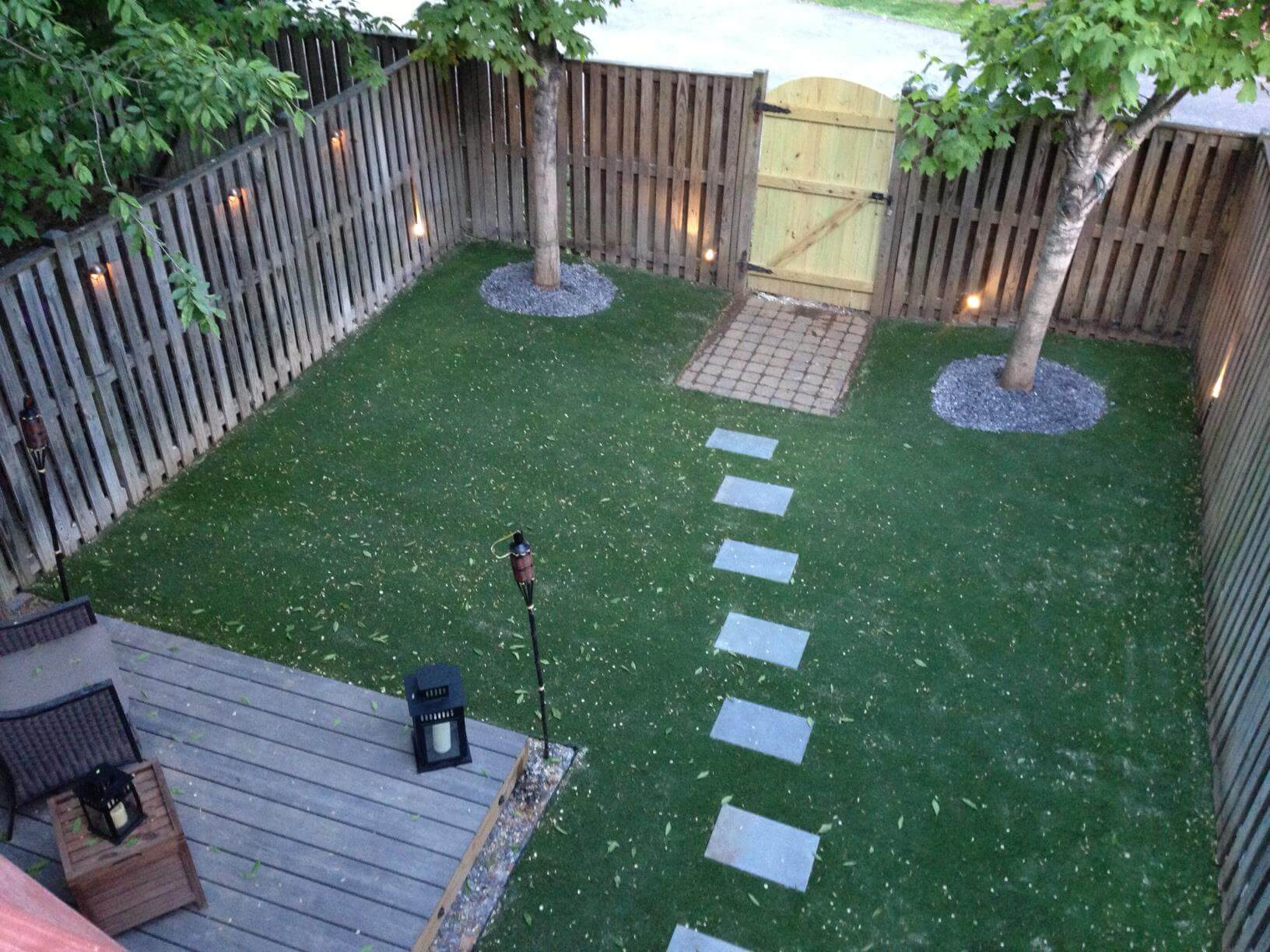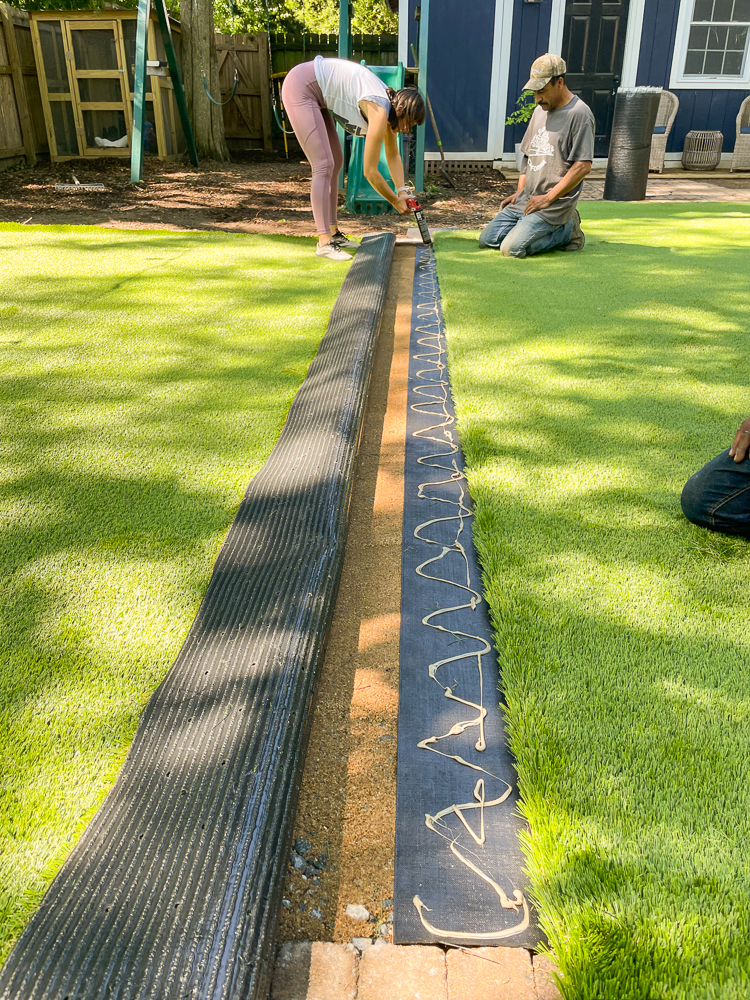Leading Factors to Take Into Consideration Artificial Lawn for a Low-Maintenance and rich Backyard
As home owners significantly seek lasting services for outside rooms, man-made turf provides an appealing alternative to conventional grass. Its ability to preserve a dynamic look year-round without the problems of mowing, chemical, or watering therapies makes it a practical selection for those aiming to minimize upkeep initiatives. Moreover, the ecological advantages, including considerable water preservation and decreased reliance on chemicals, straighten with modern environmental values. Nevertheless, the advantages prolong past plain appearances and sustainability; discovering the multifaceted ramifications of fabricated yard exposes an extensive method to backyard administration that merits deeper consideration.
Year-Round Greenery
One of the most substantial benefits of artificial turf is its capability to offer year-round greenery, no matter climate conditions. Homeowners frequently deal with difficulties in keeping a dynamic yard due to seasonal modifications, dry spells, or hefty rains. Man-made lawn gets rid of these concerns, making sure a constantly lush appearance throughout the year.
This artificial alternative is crafted to hold up against diverse climate scenarios, from sweltering summer season heat to cold winter months temperature levels. Unlike all-natural yard, which might brown or become uneven during extreme conditions, fabricated turf keeps its vivid color and texture, boosting the visual allure of any type of landscape.
In addition, artificial grass is immune to insects and illness that generally affect all-natural lawns. This resilience adds to its enduring elegance, as there is no demand for chemical therapies or fertilizers that can be dangerous to the setting. In addition, homeowners can enjoy the visual advantages of a well-kept grass without the cyclical difficulties presented by all-natural turf care (turf installation).
Lowered Maintenance Efforts
Synthetic yard substantially reduces maintenance efforts, enabling house owners to appreciate an excellent lawn without the lengthy jobs associated with all-natural turf treatment. Among one of the most notable benefits of synthetic grass is the removal of normal mowing. Without any demand for a lawnmower, home owners save both time and the cost of upkeep connected with this equipment.

Cleaning up synthetic turf is uncomplicated; a straightforward rinse with a hose or the periodic brushing to remove debris is typically adequate - artificial grass canoga park. This convenience of treatment allows home owners to invest even more time appreciating their outdoor areas instead of laboring over them. In summary, the reduced upkeep efforts connected with artificial turf make it an appealing option for those looking for a gorgeous, hassle-free backyard
Water Preservation Conveniences
The significant decrease in maintenance efforts connected with synthetic yard encompasses water preservation, making it an eco-friendly alternative for house owners. Standard grass require substantial amounts of water to stay lively and lush, often leading to extreme water use, especially in dry areas. On the other hand, synthetic lawn gets rid of the requirement for regular watering, dramatically minimizing the general water usage in your backyard.
By selecting synthetic turf, house owners can conserve countless gallons of water yearly. This change not just benefits individual households but likewise adds to wider ecological initiatives targeted at lowering water waste. In areas experiencing water shortage, the adoption of fabricated turf can play a significant role in reducing the results of drought Homepage and making sure that useful water resources are made use of extra effectively.
Additionally, the installation of synthetic yard can assist reduced municipal water demand, benefiting the area as a whole. With expanding understanding of environmental issues, picking synthetic lawn functions as a positive step in the direction of sustainable landscape design, aiding to preserve all-natural water resources while keeping a visually pleasing exterior space (artificial grass installation). In recap, artificial lawn provides a compelling service for water preservation, straightening ecological obligation with modern landscape design requirements

Parasite and Allergic Reaction Decrease
A considerable advantage of installing synthetic turf is its ability to decrease pests and allergens in outside rooms. Conventional grass lawns frequently function as reproducing premises for insects such as insects, ticks, and ants, which can produce discomfort and wellness threats for households and pet dogs. On the other hand, man-made yard eliminates the natural material that brings in these bugs, consequently considerably decreasing their populaces in your yard.
Furthermore, natural lawn can nurture mold, plant pollen, and various other irritants, which can set off allergies and breathing problems for sensitive individuals. Synthetic lawn offers a cleaner environment, decreasing the capacity for allergenic reactions. Unlike natural yard, fabricated grass does not generate pollen, making it an exceptional alternative for allergic reaction sufferers seeking to enjoy their outside spaces without the danger of flare-ups.
Furthermore, the lack of dirt in synthetic grass implies there is much less dirt and dirt, further minimizing air-borne irritants. This low-maintenance alternative not just boosts the aesthetic charm of your lawn yet likewise promotes a healthier outdoor atmosphere, allowing families to appreciate their grass without the consistent fear of pests and irritants. Thus, synthetic turf is a calculated choice for those focusing on convenience and health and wellness look at here in their outdoor space.
Long-Term Cost Savings
Spending in synthetic turf can lead to substantial lasting expense savings for property owners. Man-made yard gets rid of the requirement for routine lawn maintenance costs, such as mowing, feeding, and watering.
In addition, the longevity of synthetic lawn further improves its cost-effectiveness. A lot of high-grade artificial lawn items can last 15 to 25 years with marginal upkeep, lowering the demand for substitute or extensive repair work. On the other hand, all-natural turf may need frequent reseeding and routine treatment, which can swiftly build up in costs.
Energy savings are an additional important element. Homeowners can anticipate to see lower water costs, as artificial grass does not need irrigation. Furthermore, the decrease in lawn care solutions can release up beneficial time and resources, enabling home owners to allocate their budgets in other places.
Verdict
In summary, man-made navigate to this website yard offers many benefits for home owners seeking a vibrant and low-maintenance landscape. Its ability to give year-round plant, coupled with decreased upkeep efforts and substantial water conservation, makes it an attractive choice. In addition, the decrease of allergens and bugs adds to a healthier outside setting. Inevitably, the lasting price savings related to synthetic grass strengthen its status as a functional and sustainable service for improving exterior spaces.
Fabricated turf dramatically reduces upkeep initiatives, enabling house owners to enjoy an immaculate yard without the taxing tasks connected with all-natural grass treatment.The significant decrease in upkeep initiatives connected with fabricated grass extends to water preservation, making it an environmentally friendly choice for homeowners. In comparison, artificial grass removes the demand for normal watering, significantly reducing the overall water intake in your yard.
In locations experiencing water shortage, the adoption of synthetic turf can play a substantial role in mitigating the results of dry spell and guaranteeing that valuable water resources are made use of extra successfully.
With expanding recognition of ecological issues, choosing artificial grass serves as an aggressive action in the direction of lasting landscape design, aiding to protect all-natural water resources while preserving a visually pleasing exterior space.